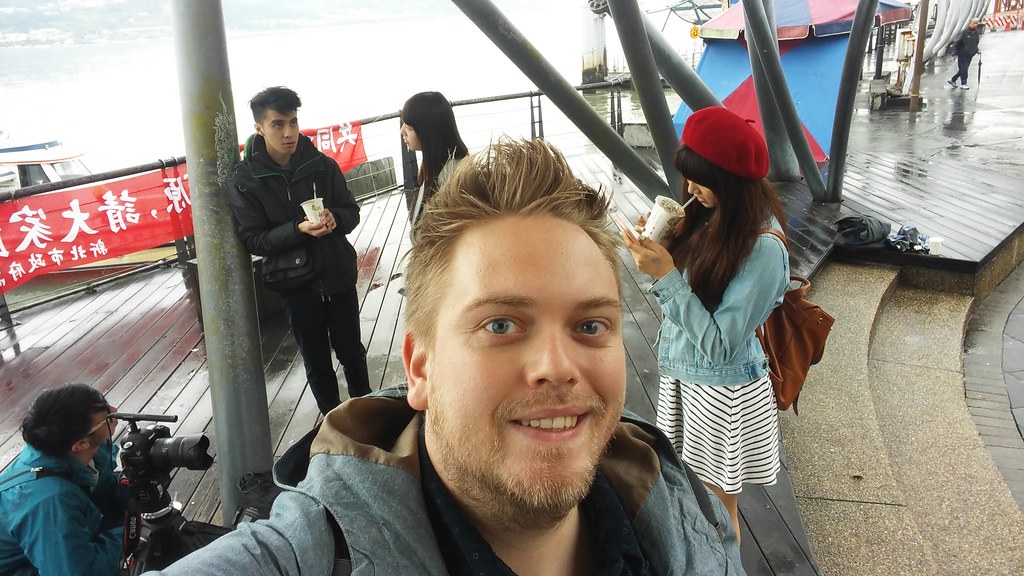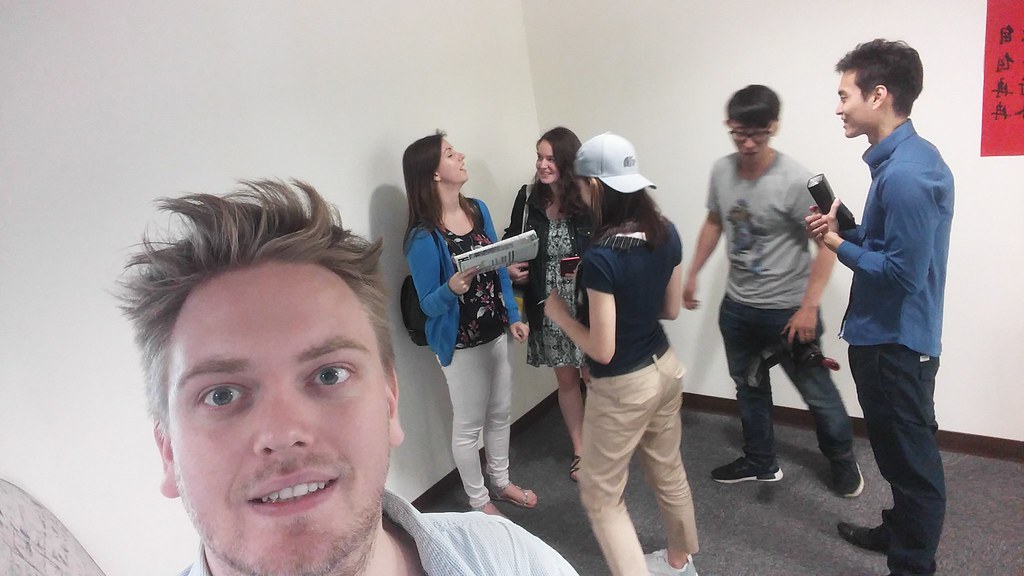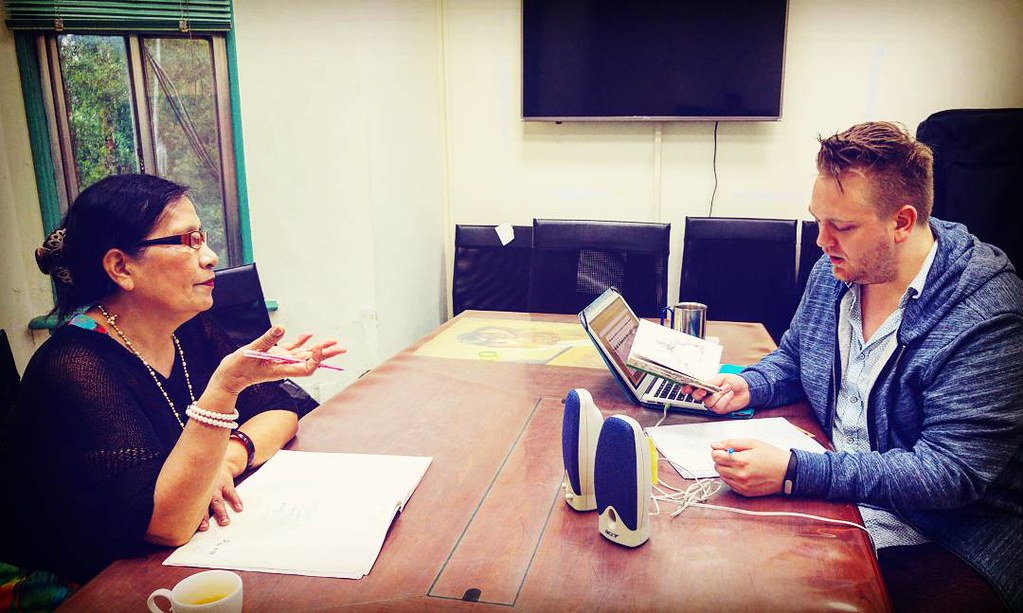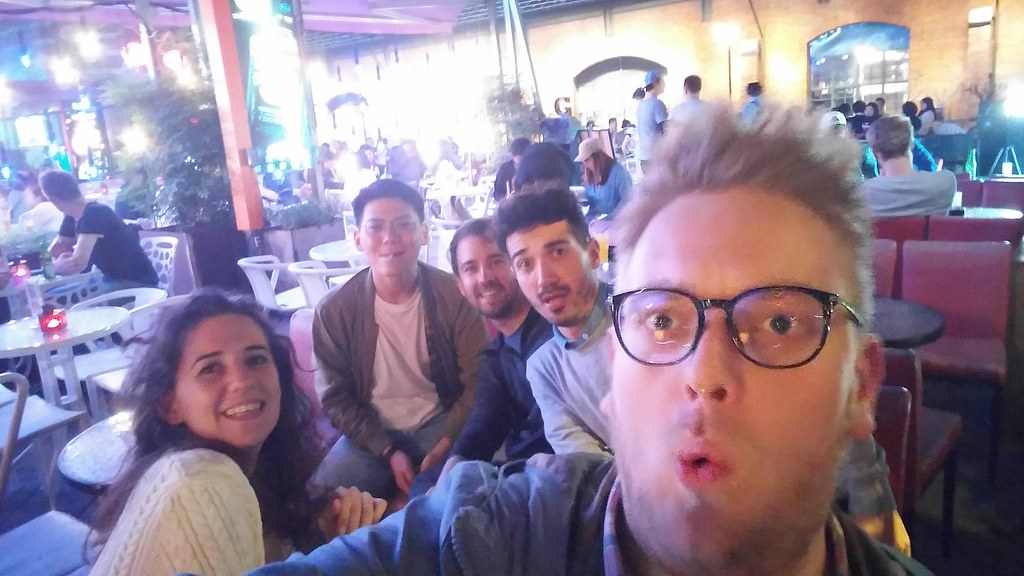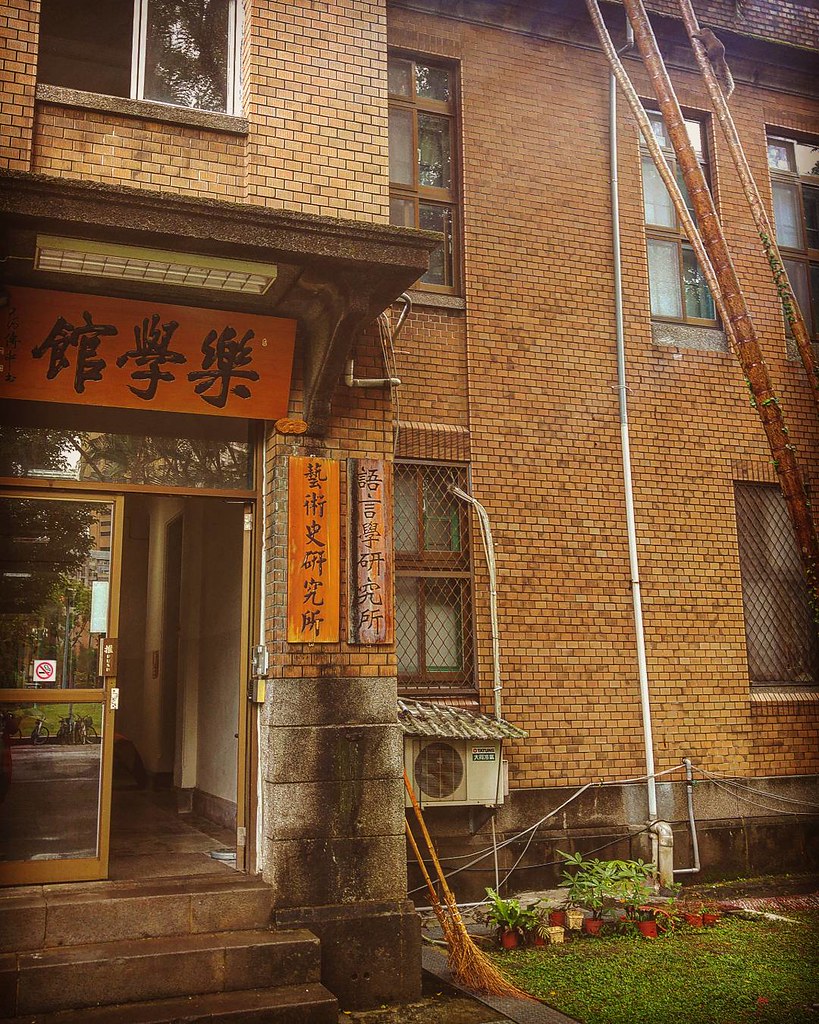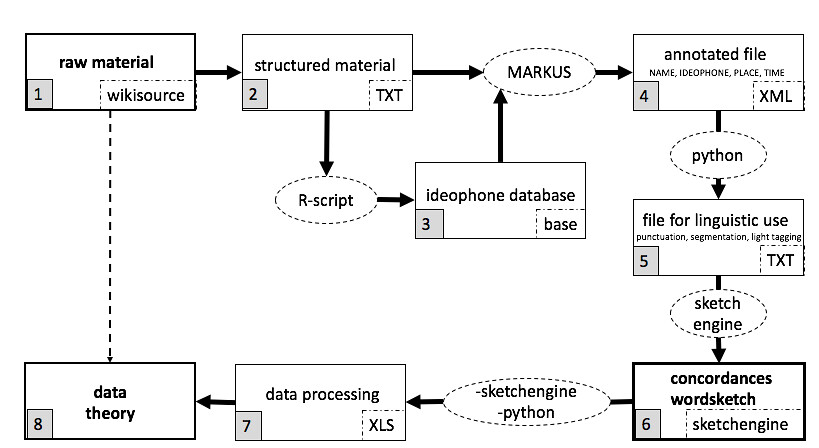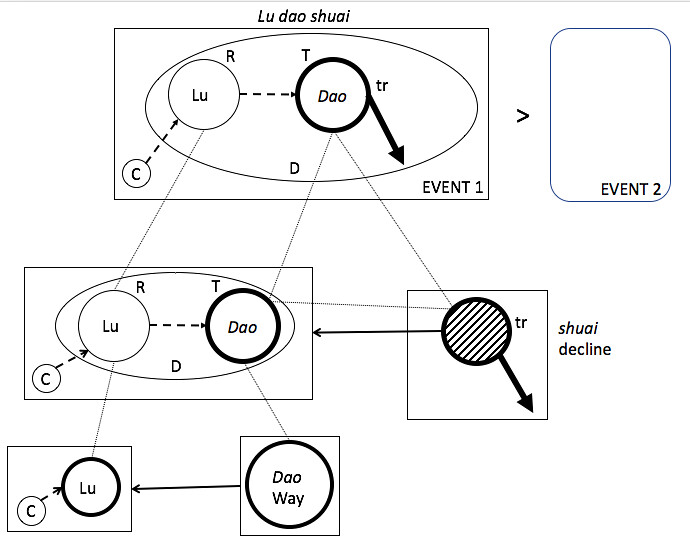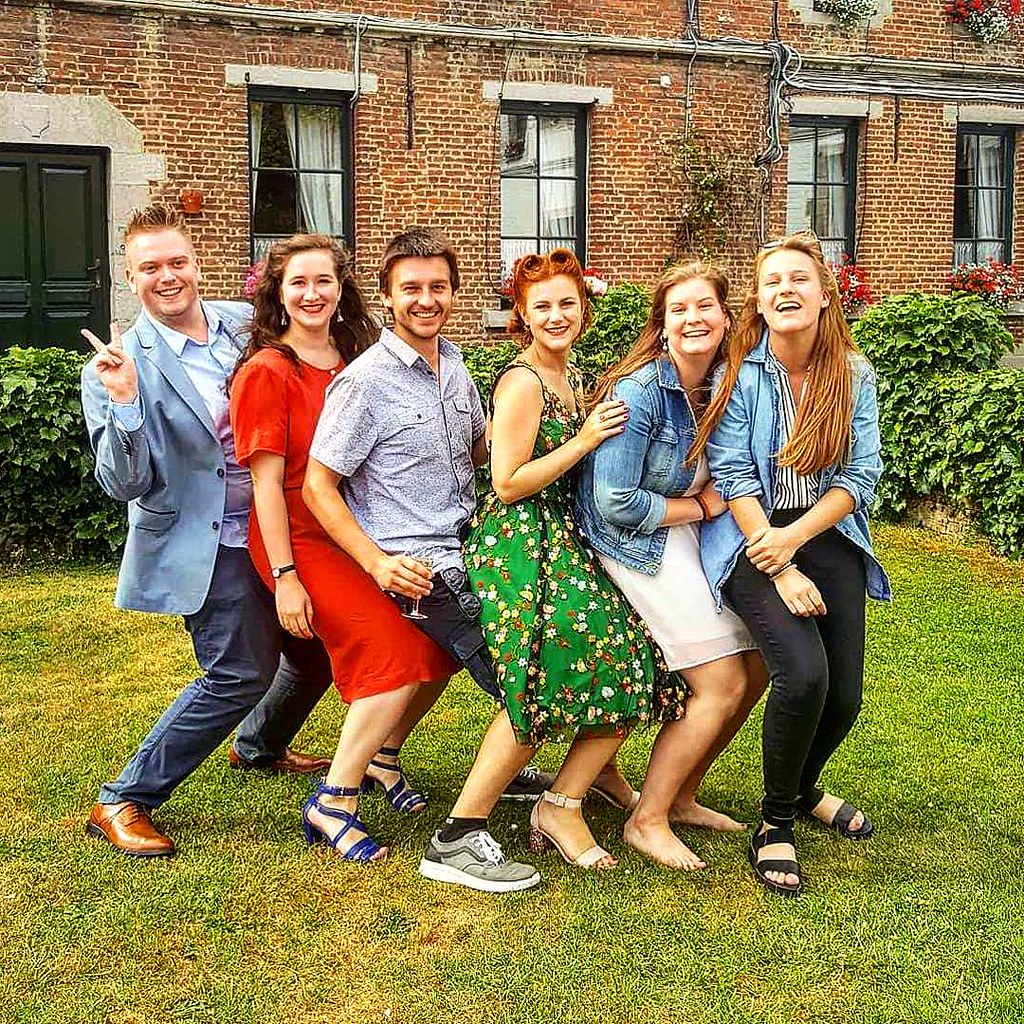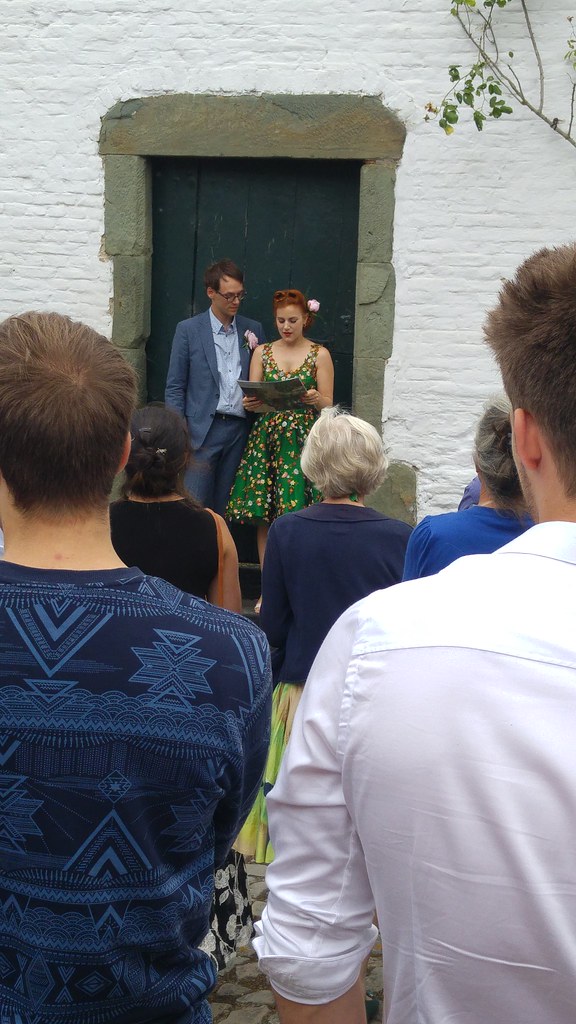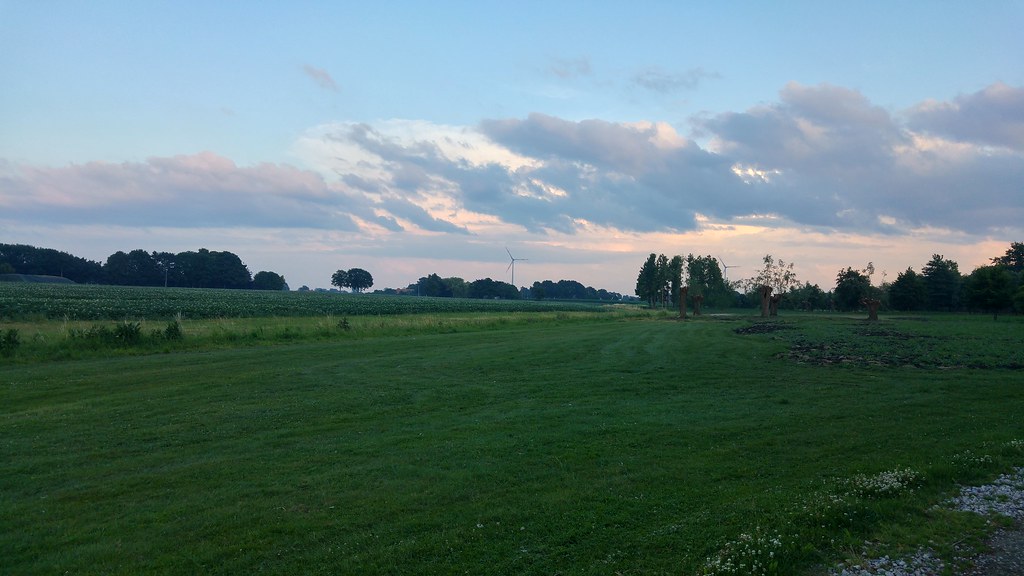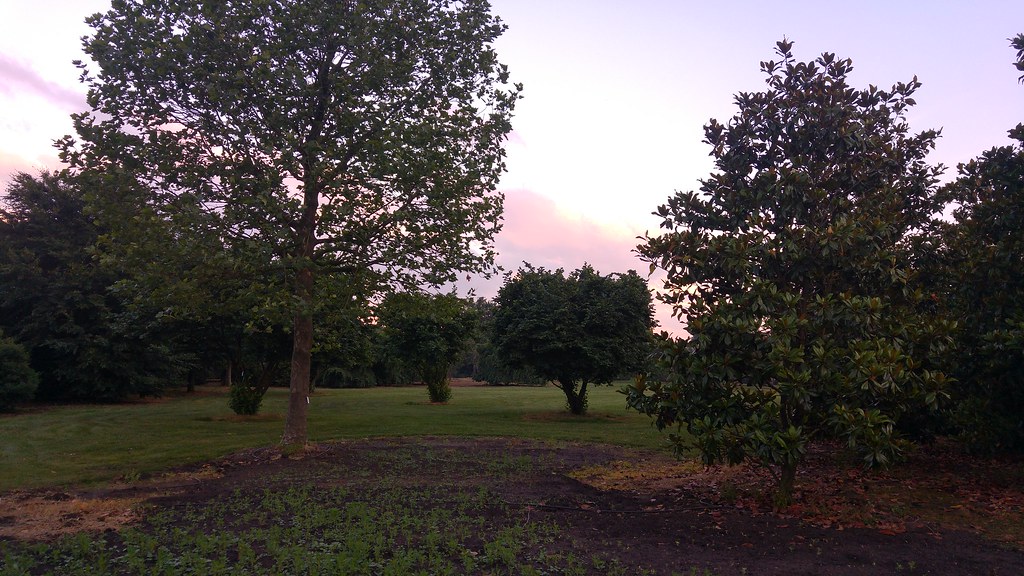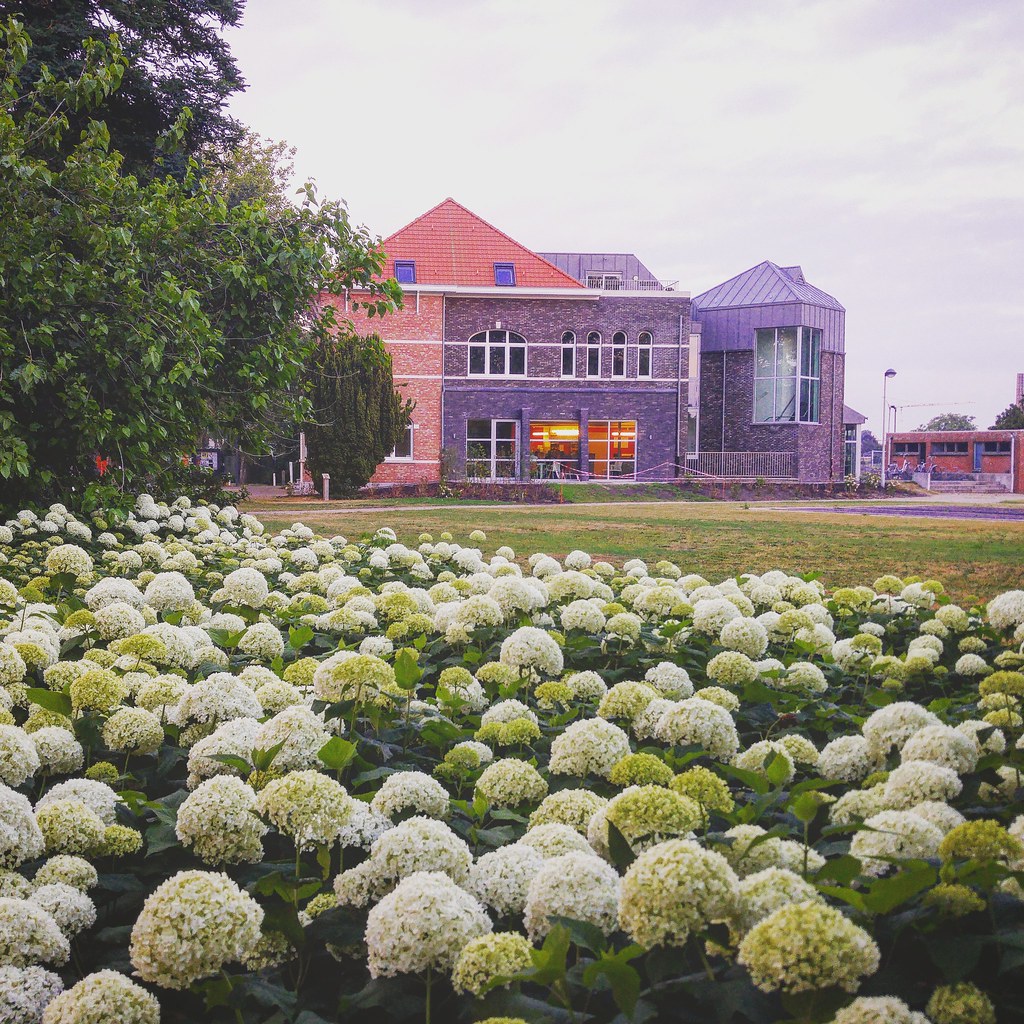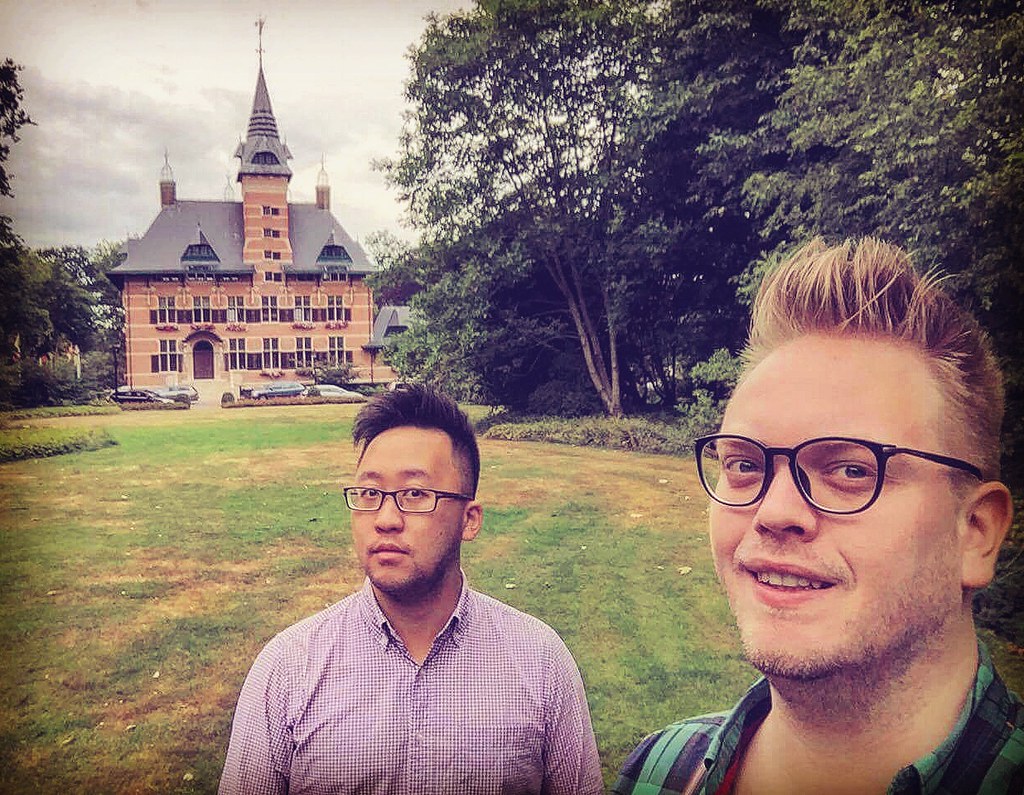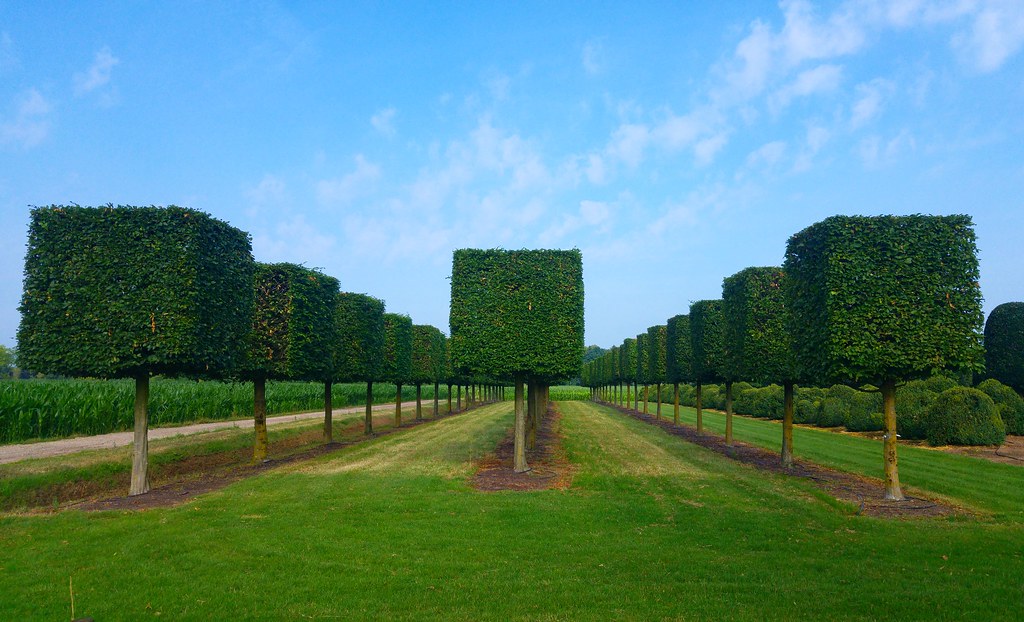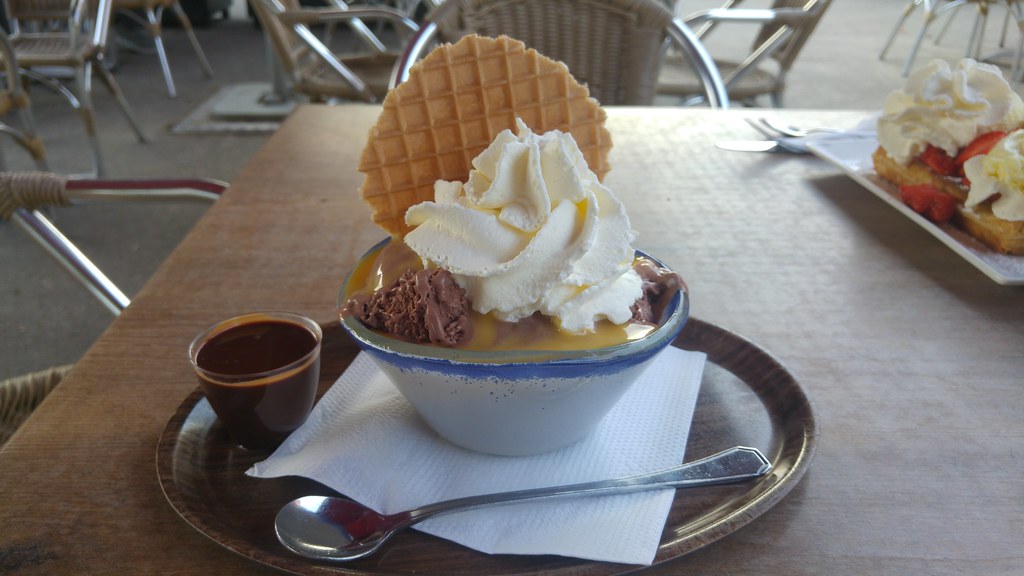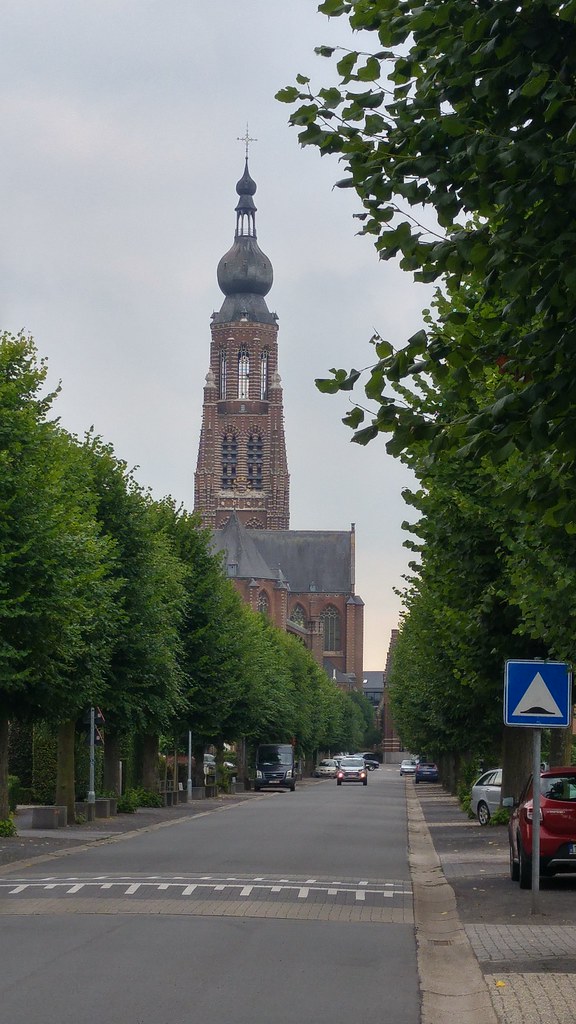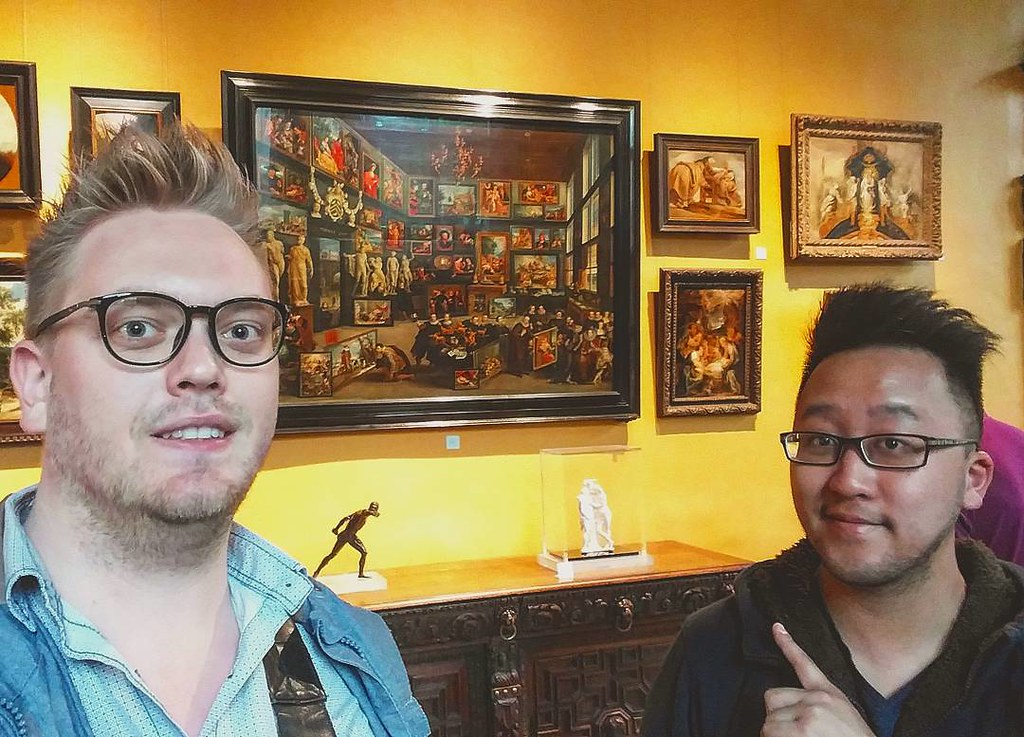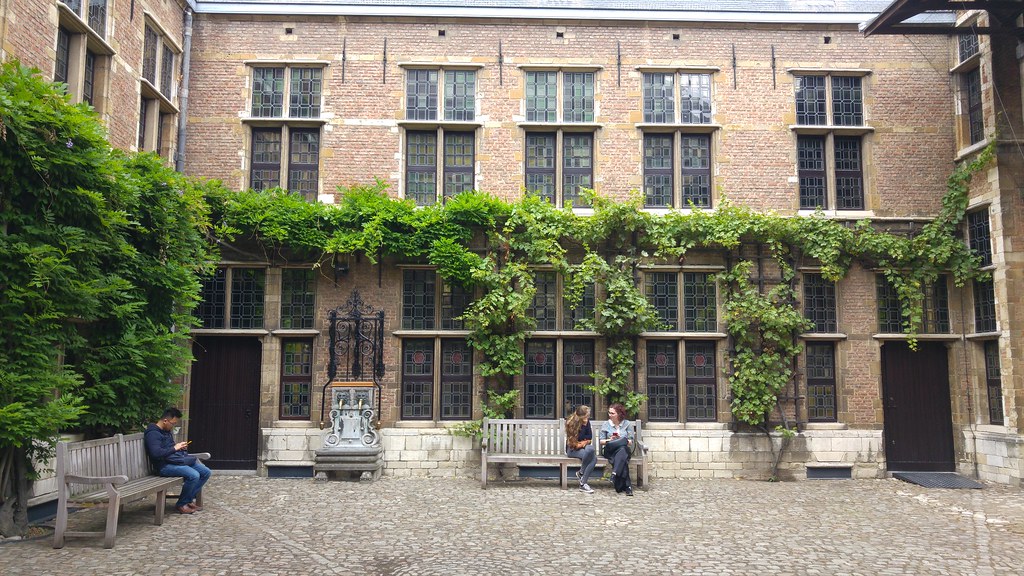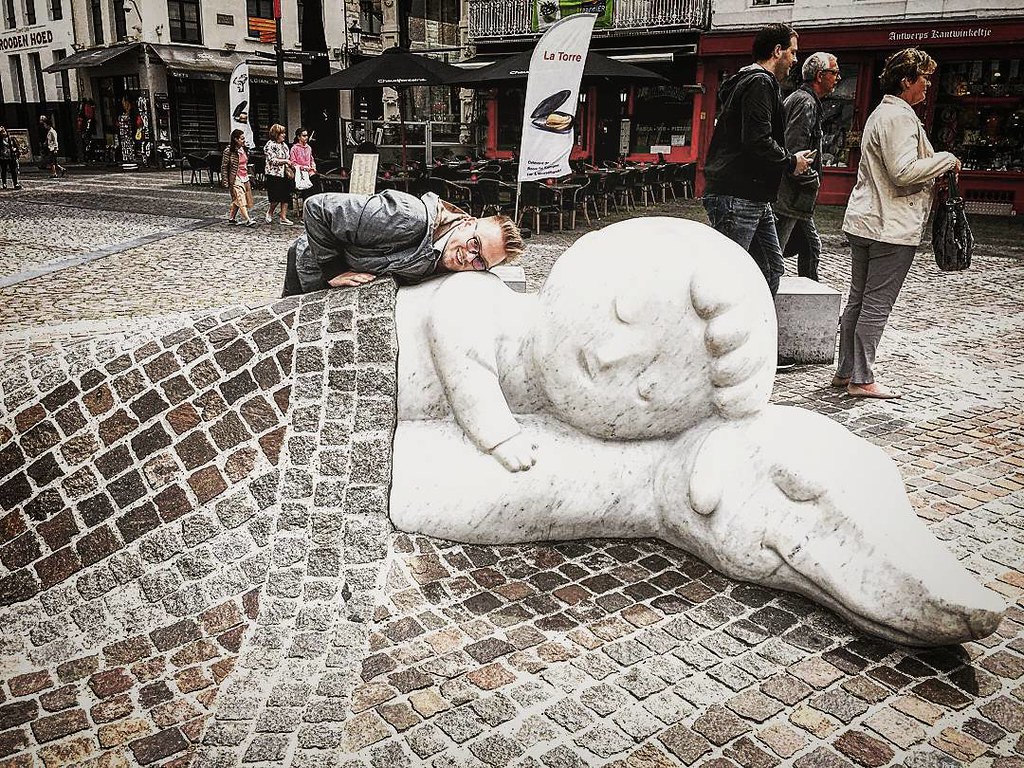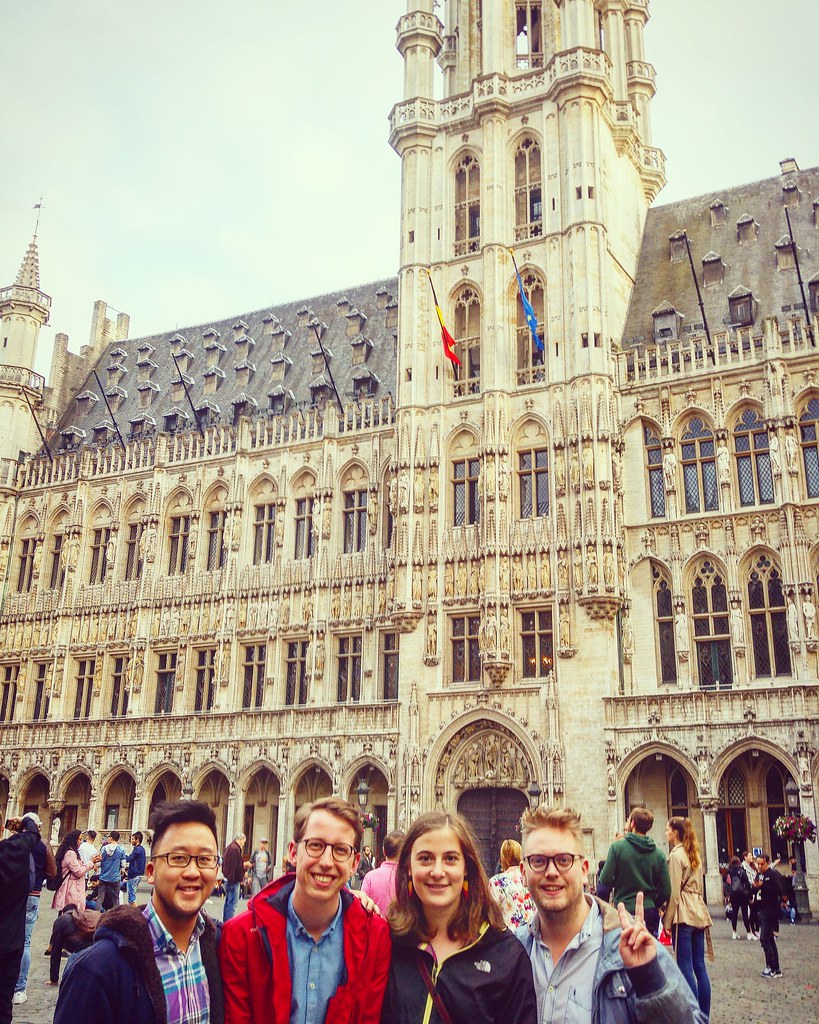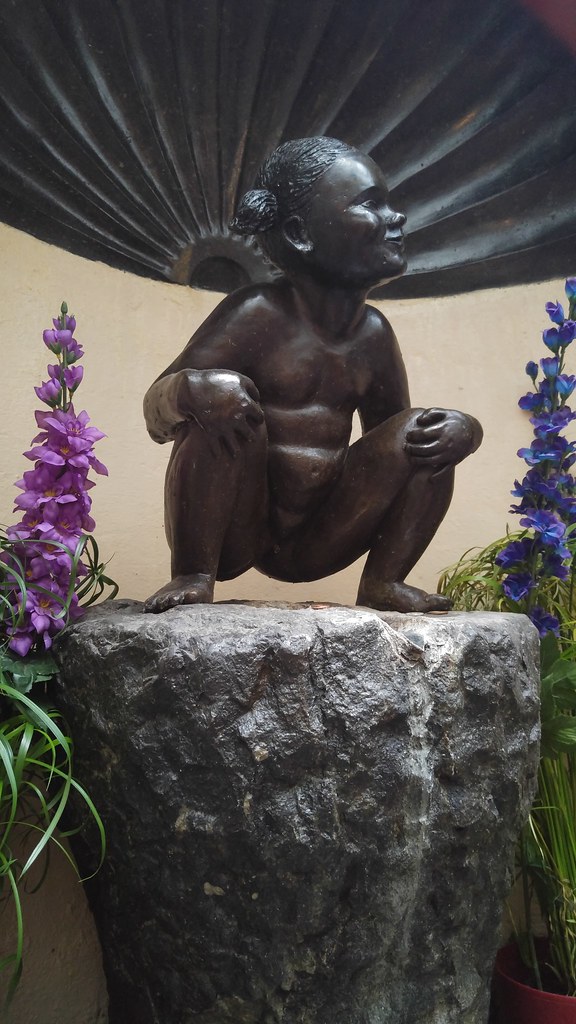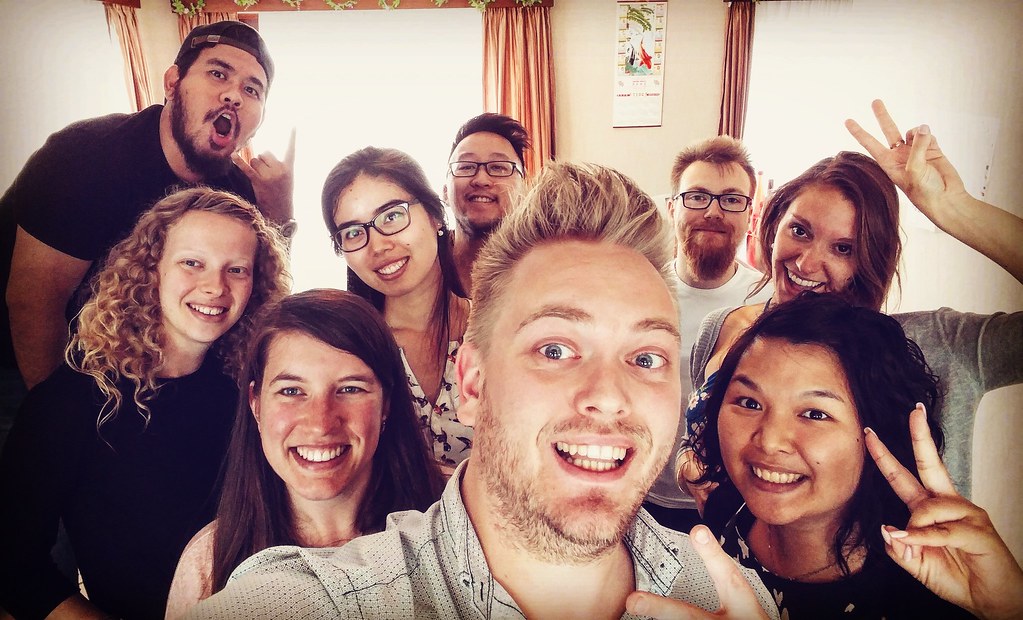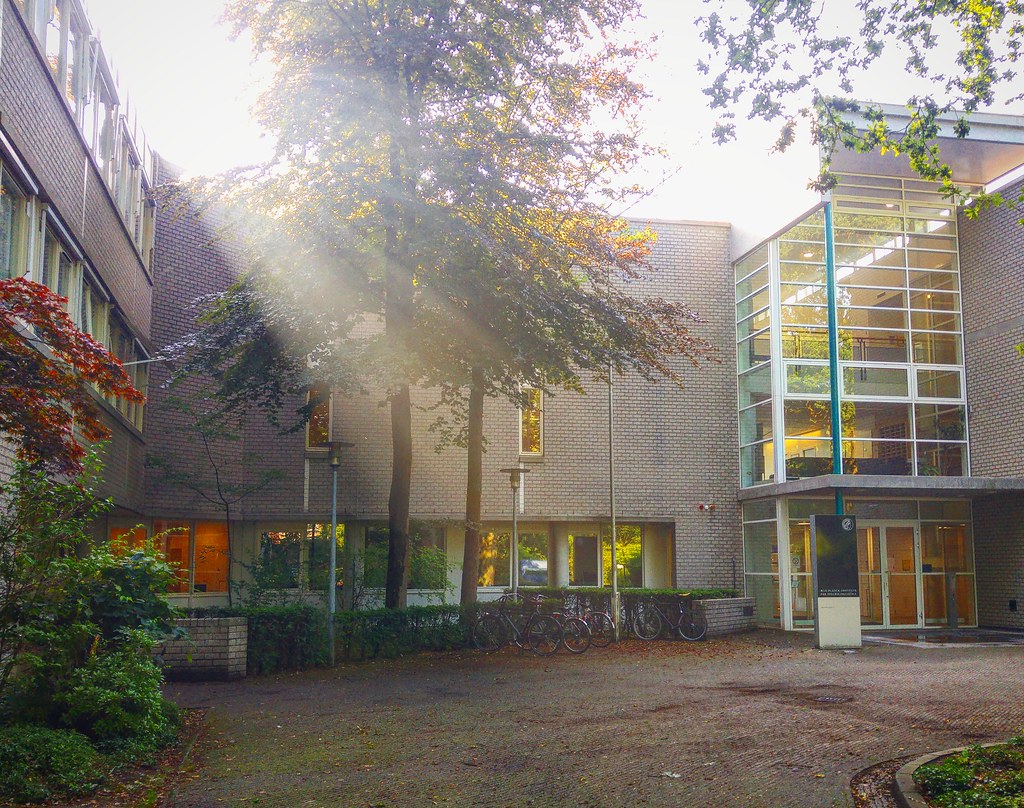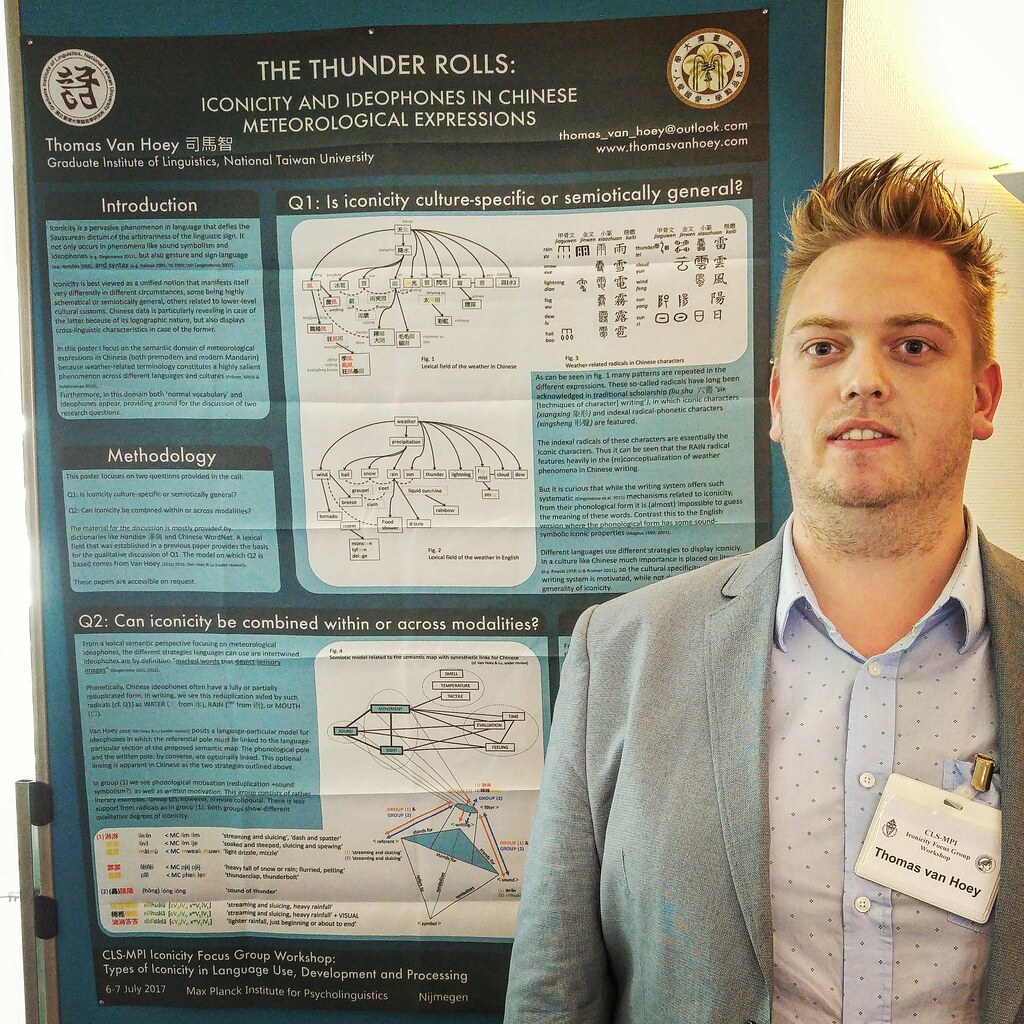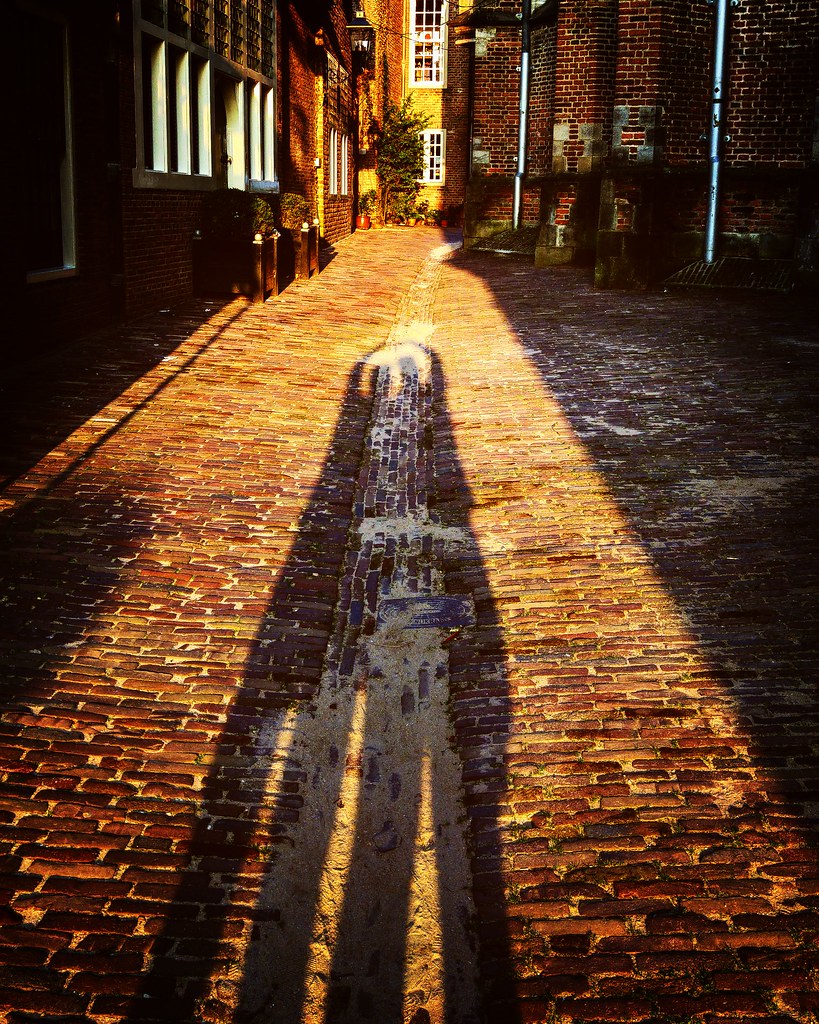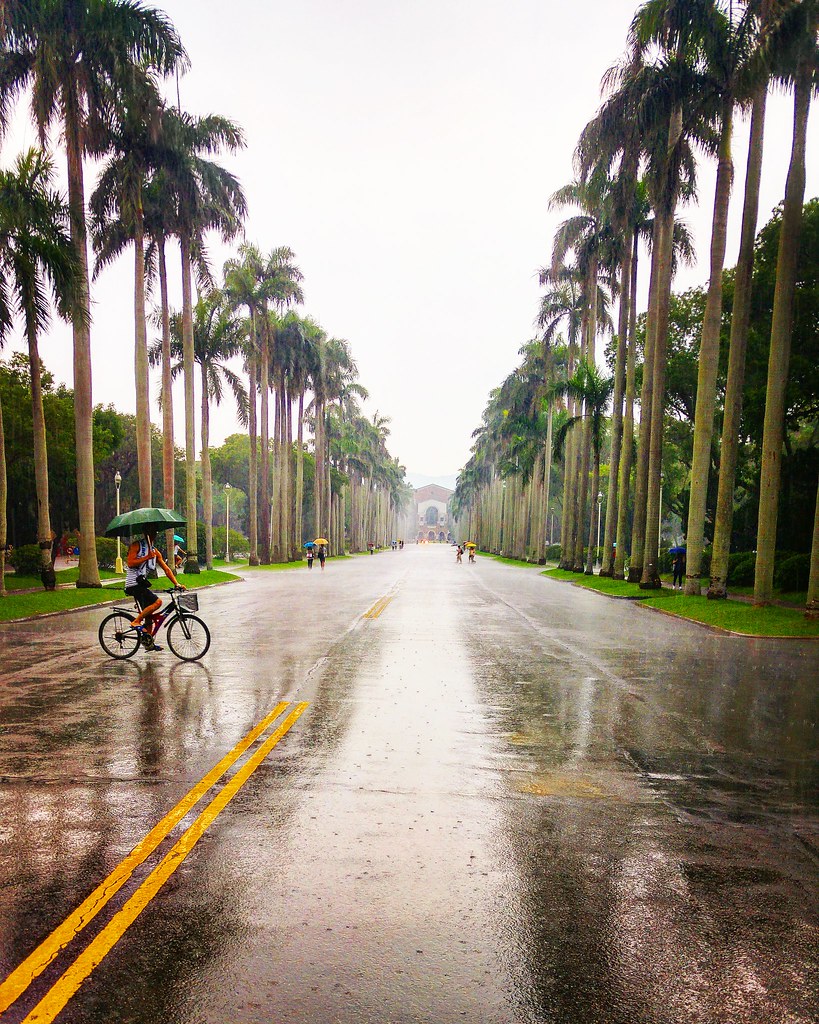Time flies! This post will be a short recapitulation of some things that happened after the second semester started and I first went on a trip with my friends from Belgium (read all about it here). As such, I will write a bit about my work as a model (yes, I became somewhat of a model haha); my work in the field with the Bunun people; my work as a host to people who visited me; my work as a visitor myself; and finally, my work as an academic, both in Taiwan as well as in the international community. Well, as a matter of fact, these things do not always feel like work, as you may guess from this blogpost. Here is a Taiwanese moon and campus picture to whet your reading appetite.
Wanna be on top?
Okay, first things first, let’s not get carried away with this subtitle’s reference to the catchphrase of America’s Next Top Model. However, via-via (as everything goes in Chinese culture) I was asked to star — or at least participate — in a small commercial for a touristic app of the New Taipei City Travel Bureau. Let’s have a look, shall we? Take out the popcorn and enjoy:
A few weeks later, I was contacted again by the director of that campaign to help for another touristy app called Wogogo. The app looks solid; if you want to book a tour guide, I would suggest checking it out. Here is a promotional picture, taken together with two dear friends of mine, Vera and Aude:
So yeah, that’s where my modelling career is at. I don’t know if it will continue but both times I had a fun experience and if it fits in my schedule I might take on some more work like this. Here is some authentic behind the scenes footage of me taking selfies when the other coworkers weren’t looking, #exclusive:
Bunun Fieldwork
This semester I was working again with Bunun data, a language we had studied in Fieldwork last year. This time, the goal is assisting prof. Sung with the Corpus of Formosan Languages, a collection of transcribed and analyzed texts that can teach us a lot about how different languages, in this case the Formosan (Austronesian) languages. Different from last year, however, was that we did not really go in the field, but the field came to us! Every Friday I met with Hanaivaz (watch some of her videos on youtube) and played recordings of the Pear Stories and the Frog Story — Frog where are you?, recorded by my fellow graduate student Eric, who together with another (already graduated student) Aarin, are the main participants of the project on Bunun.
In this “totally natural, non-posed, non-filtered picture that was run through instagram” you can see Hanaivaz and me doing some work. It is intensive work, and also has an intensive after-work component, but I really like it as well. And I recently learned that I can continue my work starting in September, so I am looking forward to that.
Some visits to Taiwan
In the category “visitors of Taiwan that I had the honour to meet up with” we had some fellow students from the summerschool at NTU that I attended in 2014, which first propelled me to apply for the programme I am in. There was the cool Antonio, who I went to visit in Japan last year and who I consider to be my bro.] He brought his sister and his partner and just appeared super randomly in Taiwan. But every time I meet him it’s like the summer school was yesterday.
And the same statement goes for the wonderful Korean Jiye and the great Singaporean May Tay, not to be confused with the band May Day. Here is a picture of Jiyeah! (but for May I couldn’t find any?).
Courses
I am mostly through with the course part of my PhD. In previous updates I explained how that is a way in which PhDs across the world seem to differ: in Taiwan at least you have to take a certain amount of courses, expressed in study credits, only after which you are eligible to graduate. Of course there are some other requirements to fulfil, but this is the stage I am/was at.
Logical Analysis
I took two main courses this semester. The first one was “logical analysis of language” (yuyan de luoji fenxi 語言的邏輯分析), in which Prof. Hsieh posed the challenge to think about linguistic problems based on small data sets that had been slightly simplified. The course was conducted in relation to the preselections of Taiwan’s participant of the International Linguistics Olympiad. In general I think it gave a nice overview of the basic components of linguistic theories, as well as some reflection on the nature of language. There was also some conlang-inspired coursework. For instance, here you see me and my group mate Nick having a conversation in a made-up sign language. At the time it was only a few days old so it’s more pidginy than creoly in nature, but we managed to communicate. Subtitles provided!
Seminar of Cognitive Grammar
The second course I took was the Seminar of Advanced Cognitive Grammar, which is our lab meeting as well. This semester we focused on Cognitive Grammar (from Langacker 1987 onwards) and Radical Construction Grammar (from Croft 2001 onwards). I may have found a source of material that will help me to answer one of the questions I have been interested in all along: how did ideophones develop diachronically in Chinese? Without going into too much detail, for this paper I was concerned about the methodology, from a technical perspective. The question most researchers are grappling with (or should be) is the source of their data (I am using historical texts), and how to transform raw material into analyzable and usable data. For the moment, I have devised a float chart that should take my data from raw material to slightly enriched material ready for analaysis. Here’s the chart:
Then the question I asked, related to ideophones, was what patterns would emerge from the data. I noticed an interesting phenomenon of post-ideophone markers, which I will follow up on later. Without explaining it too much here, I just want to show the figures I used for the analysis or the motivated explanation in terms of Cognitive Grammar — mostly because I am proud of them, ha:
“魯道衰”
“洙泗之間,殷殷如也”
What was also special about this paper is that it was largely written when I was already back at home!
Home and away
I flew home the 24th of June, after the last week of final presentations. As usual we had had the celebratory dinner with Lu laoshi’s group. It was a very cozy evening after a full(!) day of final term presentations - a marathon as it were – held at my Vietnamese classmate Carol’s Vietnamese restaurant.
So after rushing out of my dorm the next day because of the imminent construction works this summer I flew home on the 24th. I arrived the next day in Amsterdam and travelled home to Belgium, only to leave again after one or two hours. One of my best friends Céline had an engagement party in Bièrghes, located in the Middle-Of-Nowhere-city-stan right below Brussels. So we drove, and drove, and went up the highway and off the highway and up and off and up and off until finally we arrived. Here is a cool picture of me with Céline and other presidents of Eoos, past-present-and-future.
The even was a lot of fun. I think Céline and Joes (not pronounced like the plural of ‘Joe’, but rather like [yu:s]) really fit together and I wish them a happy marriage together! Here they are showing off their literacy skills.
Globetrotters
After that event we went back home, from Bièrghes, located in the Middle-Of-Nowhere-city-stan, all the way to the megapolis that constitutes Loenhout. I had a nice week chilling at home, while also writing the aforementioned paper and some more. We, i.e. me and CJ, also explored a bit the beautiful landscapes of Loenhout.
Then one day we went to Antwerp, and visited the Rubenshuis. Beautiful paintings, the best paintings, painted with big hands, comes from “Hand werpen” (‘throw hand’), it was the biggest hand.
Also a trip to ‘Hellhole Brussels’ which was essentially a Belgians in Taiwan reunion. Click here to read more about my adventures with Cedric, Ruben and Isabelle. It was fun, though we didn’t manil.
And of course I should mention the Sinology reunion orchestrated by my good friend Lai Man. Thank you for hosting us and the whole gang!
#IFG17
Then, to wrap up, I will tell you something about the conference I attended in Nijmegen, The Netherlands. It was called “Iconicity Focus Group Workshop”, hence the hashtag #IFG17. I presented a poster over there, which talked about the weather in Chinese. Well, it talked about weather-related ideophones and iconicity in the writing system. It was hosted at the Max Planck Institute of Psycholinguistics, coincidentally the only other place I had applied for a PhD a few years back. I am more than happy at the university I am at, and now I was extra more than happy to be able to have a look at the MPI and its surroundings and meet lots of interesting people. It also inspired me in some ways for my research so I consider the conference a success.
And here is my picture in front of the poster:
You can read my poster when you click on this link here (please do!).
No regen in Nijmegen?
Then finally, some pictures of the second oldest city of the Netherlands, Nijmegen. We had beautiful weather and also good food, but unfortunately I was not able to enjoy the city for that long, being away at my conference.
In fact, I had to look back in my archive to find a picture I had taken of the rain in Taipei, about a month ago, in order to find a picture to contrast it with the drought and warm weather, even heatwaves we have had here in Belgium and the Netherlands the last few weeks. It’s also the final picture of this update, so cherish it.


